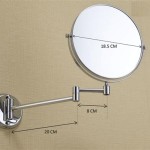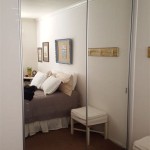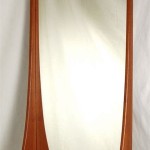Screen Mirroring Your Macbook to a Sony TV: A Comprehensive Guide
Mirroring a Macbook's screen to a Sony TV allows users to display content from their laptop on a larger display. This functionality proves particularly beneficial for presentations, shared viewing of photos and videos, or simply enjoying a more immersive computing experience. Several methods exist to achieve this, each with its own advantages and limitations. Understanding these methods and potential troubleshooting steps ensures a smooth and successful screen mirroring experience.
This article delves into various techniques for screen mirroring a Macbook to a Sony TV, examining both wireless and wired options. It also explores potential issues that may arise and provides solutions to resolve these complications. The objective is to provide a comprehensive guide for users of all technical skill levels seeking to effectively utilize screen mirroring capabilities between their Macbook and Sony TV.
Wireless Screen Mirroring using AirPlay
AirPlay offers a seamless wireless screen mirroring solution for Apple devices. Sony TVs manufactured after 2018 generally include native AirPlay 2 support. This eliminates the need for external hardware or complex configurations. The ease of use and high image quality make AirPlay a preferred option for many users within the Apple ecosystem.
To initiate AirPlay mirroring, both the Macbook and the Sony TV must be connected to the same Wi-Fi network. Once confirmed, the user should navigate to the System Preferences on the Macbook. Within System Preferences, select 'Displays'. A dropdown menu labeled 'AirPlay Display' will appear. Selecting the Sony TV from this list initiates the screen mirroring process.
The 'AirPlay Display' menu also allows users to configure mirroring options. Users can choose between mirroring the built-in display, using the TV as an extended display, or optimizing the video quality for either standard or high resolution. Adjusting these settings optimizes the viewing experience based on the content being displayed and the network bandwidth available.
While AirPlay offers a convenient wireless solution, its performance is heavily reliant on a stable and robust Wi-Fi network. Congestion, interference, or a weak signal can lead to lag, pixelation, or disconnections. Therefore, ensuring a strong and reliable Wi-Fi connection is crucial for optimal AirPlay performance. Using a 5 GHz Wi-Fi network instead of a 2.4 GHz network can also improve performance, as the 5 GHz band typically experiences less interference.
Some older Sony TV models might not natively support AirPlay 2. In such cases, alternative solutions such as using a third-party app on the TV that supports AirPlay or using an Apple TV connected to the Sony TV are necessary to enable wireless screen mirroring.
Screen Mirroring via Chromecast
Chromecast, while technically a Google product, can also be used to cast content from a Macbook to a Sony TV, especially if the Sony TV has Chromecast built-in (typically Android TVs). This method often involves using the Google Chrome browser and the 'Cast' functionality.
Similar to AirPlay, both the Macbook and the Chromecast-enabled Sony TV must be connected to the same Wi-Fi network. Open the Google Chrome browser on the Macbook. Navigate to the content that needs to mirrored, such as a webpage or a video playing in the browser. In the Chrome browser, click on the three vertical dots in the upper right corner to access the menu. Select 'Cast' from the menu options. A list of available Chromecast devices on the network will appear. Select the Sony TV from this list to initiate the casting process.
Using Chromecast allows users to selectively cast specific tabs or the entire desktop. This can be beneficial when multitasking or when only a portion of the Macbook's screen needs to be displayed on the TV. The control over what is being cast provides more flexibility compared to a full screen mirror.
The performance of Chromecast is also dependent on the Wi-Fi network. Similar to AirPlay, a strong and stable Wi-Fi connection is crucial. The Chrome browser also plays a significant role, as outdated versions or excessive browser extensions can negatively impact casting performance. Ensuring that the Chrome browser is up to date and minimizing the number of active extensions can help improve the casting experience.
For content that is not directly accessible through a Chrome browser, screen mirroring the entire desktop can be achieved through the Google Home app, provided the Chromecast device or the Chromecast functionality built into the Sony TV is properly set up and configured within the Google Home ecosystem. The Google Home app allows you to select your TV and then choose the option to cast your screen.
Wired Screen Mirroring via HDMI
Using an HDMI cable provides a reliable and direct connection between the Macbook and the Sony TV. This method bypasses the reliance on a Wi-Fi network, eliminating potential issues related to network congestion or interference. A wired connection generally offers a more stable and consistent screen mirroring experience, particularly for high-resolution content or demanding applications.
Most Macbooks, particularly newer models, require an adapter to connect to an HDMI port. The specific adapter needed depends on the ports available on the Macbook. USB-C to HDMI adapters are commonly used for Macbooks with Thunderbolt/USB-C ports. Once the appropriate adapter is acquired, securely connect the HDMI cable to both the adapter (plugged into the Macbook) and the HDMI port on the Sony TV.
After establishing the physical connection, the Sony TV needs to be set to the correct HDMI input. Use the TV's remote control to navigate to the input selection menu and choose the HDMI port to which the Macbook is connected. Once selected, the Macbook's display should appear on the TV screen.
In some cases, the Macbook might not automatically detect the Sony TV. If this occurs, navigating to System Preferences > Displays on the Macbook and clicking the 'Detect Displays' button can force the system to recognize the connected TV. Additionally, users can adjust the display settings, such as resolution and refresh rate, to optimize the viewing experience. Ensuring the resolution settings on the Macbook match the native resolution of the Sony TV helps prevent scaling issues and maintains image clarity.
While HDMI offers a stable and reliable connection, it lacks the portability of wireless solutions. The physical cable restricts movement and can be less convenient for situations where flexibility is required. However, for scenarios demanding a stable and high-quality display, such as professional presentations or gaming, a wired HDMI connection remains the preferred option.
Troubleshooting Common Screen Mirroring Issues
Despite the relative simplicity of screen mirroring, users may encounter various issues that prevent a successful connection or degrade the viewing experience. Addressing these issues requires a systematic approach to identify the root cause and implement appropriate solutions.
One common issue is the failure to detect the Sony TV as an available display. For wireless connections, ensuring both devices are on the same Wi-Fi network and that AirPlay or Chromecast is enabled on the TV is crucial. Restarting both the Macbook and the Sony TV can also resolve temporary connectivity issues. For HDMI connections, verifying that the cable is securely connected and that the TV is set to the correct HDMI input is essential. If the display is still not detected, trying a different HDMI cable or adapter can help rule out hardware failures.
Another frequently encountered problem is lag or stuttering during screen mirroring. This is often caused by a weak Wi-Fi signal or network congestion. Moving closer to the Wi-Fi router, reducing the number of devices connected to the network, or upgrading to a faster internet plan can improve network performance. For HDMI connections, ensuring that the HDMI cable supports the desired resolution and refresh rate can prevent performance bottlenecks.
Image quality issues, such as pixelation or incorrect aspect ratio, can also arise. Adjusting the display settings on the Macbook, such as resolution and scaling, can often resolve these problems. Ensuring that the refresh rate is compatible with the Sony TV is also important. In some cases, the TV's picture settings may need to be adjusted to optimize the image for the content being displayed.
Audio issues, such as no sound or distorted sound, can also occur. Verify that the correct audio output is selected on the Macbook. Navigate to System Preferences > Sound and ensure that the Sony TV is selected as the output device. Adjusting the volume levels on both the Macbook and the TV can also help resolve audio problems. For HDMI connections, ensure that the HDMI cable supports audio transmission.
Finally, firmware updates for both the Macbook and the Sony TV can often resolve compatibility issues or improve performance. Regularly checking for and installing the latest updates ensures that the devices are running the most optimized software versions.
By understanding the various methods for screen mirroring a Macbook to a Sony TV and addressing potential troubleshooting steps, users can effectively utilize this functionality for a wide range of applications. Whether it's for presentations, entertainment, or simply a more immersive computing experience, screen mirroring offers a valuable tool for enhancing productivity and enjoyment.

How To Mirror Mac Macbook Pro Sony Tv

How To Mirror Mac Macbook Pro Sony Tv

How To Mirror A Mac Tv Full Guide For 2024

Screen Mirroring Mac Macbook To Sony Tv Airbeamtv

How To Mirror A Mac Tv Osxdaily

Free App How To Mirror Your Mac A Sony Tv Without Apple Screen Mirroring Bravia Etc

Screen Mirroring Macbook To Sony Tv In 2024

Screen Mirroring Mac Macbook To Sony Tv Airbeamtv

How To Mirror A Mac Tv Osxdaily

2024 How To Use Apple Airplay With Sony Smart Tvs








